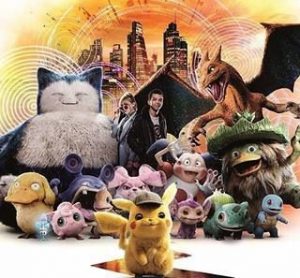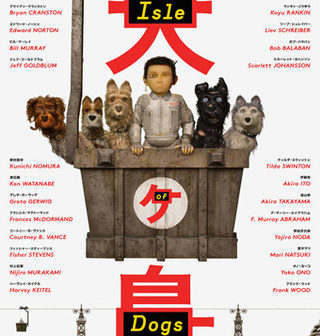Kim Ki-Duk, high five! Top 5 films of the main humanist of Korean cinema
 On December 20, 1960, the world-famous Director Kim Ki-Duk was born in Sobenni village (South Korea). The biography turned out to be motley: he left school as a 15-year-old teenager for a job at a factory, then immediately joined the ranks of the Marines, dreamed of working as a priest, became interested in drawing, studied in Paris. Ki Duk wrote his first screenplay when He was in his thirties…
On December 20, 1960, the world-famous Director Kim Ki-Duk was born in Sobenni village (South Korea). The biography turned out to be motley: he left school as a 15-year-old teenager for a job at a factory, then immediately joined the ranks of the Marines, dreamed of working as a priest, became interested in drawing, studied in Paris. Ki Duk wrote his first screenplay when He was in his thirties…
Since his debut film “crocodile” (1996) came a few dozen pictures — controversial, shocking, permeated with the spirit of Asia, a mixture of inhuman cruelty and poetic beauty. We remembered the most striking works of the Director. Continue reading
“Aquaman”: good old illogical Thriller
 The film industry loves to flirt with nostalgia. First of all, this feeling is focused on all sorts of sequels-prequels and other sidequels, clinging to the already famous franchise. But the trick of “Aquaman” (Aquaman) is not even that he is part of the growing cinematic universe of DC. His trick is that the plot he brings the viewer back to the days of militants 80-90s, who wanted to watch with his mouth open.
The film industry loves to flirt with nostalgia. First of all, this feeling is focused on all sorts of sequels-prequels and other sidequels, clinging to the already famous franchise. But the trick of “Aquaman” (Aquaman) is not even that he is part of the growing cinematic universe of DC. His trick is that the plot he brings the viewer back to the days of militants 80-90s, who wanted to watch with his mouth open.
In the first minutes after the session, I wanted to write a review of this kind: “Six reasons to go to “Aquaman”: 1. Wet half-naked Jason Momoa and also wet, but alas, less naked amber heard;2. Deliciously traced underwater world; 3. The plot of the disney cartoon about princesses; 4. A sudden despatch of mod’s “It’s No Good” somewhere in the middle and no less sudden Sigur Ros; 5. Absolutely indianojones desert with underground caves and artifacts;6. Bright and juicy picture, giving a sense of celebration. Continue reading
“Detective Pikachu”: the highest quality digital fur
 Video game movies are usually unlucky. The writers are struggling to connect what is happening in the games sur with the real world and real logic, because of what they have a complete mess. The creators of “Detective Pikachu” (Detective Pikachu) went the other way — they drew a completely new, almost detached from our world and did not try to cram into it the whole history of a huge franchise. And so they succeeded.
Video game movies are usually unlucky. The writers are struggling to connect what is happening in the games sur with the real world and real logic, because of what they have a complete mess. The creators of “Detective Pikachu” (Detective Pikachu) went the other way — they drew a completely new, almost detached from our world and did not try to cram into it the whole history of a huge franchise. And so they succeeded.
Everything in “Detective Pikachu”, except, perhaps, a couple of people and a few objects-digital, unreal, lovingly drawn by animators to the last hair, to the smallest scratch on the building. Most often, studios offer to put digital animals in a real environment, but in “Detective Pikachu” the environment was drawn for these very animals, placing people in it. Continue reading
“Spider-man: across the universes”: a movie comic in the truest sense
 The franchise “spider-Man” began its life in the sixties of the last century and for such a considerable period has grown seriously. If all began with the story of Peter Parker, then in the future radioactive spiders bit a variety of people and inhumans in parallel, restarted and simply alternative universes. It is about the diversity of spider-men and tells “spider-Man: through the universes” (Spider-man: Into the Spider-verse).
The franchise “spider-Man” began its life in the sixties of the last century and for such a considerable period has grown seriously. If all began with the story of Peter Parker, then in the future radioactive spiders bit a variety of people and inhumans in parallel, restarted and simply alternative universes. It is about the diversity of spider-men and tells “spider-Man: through the universes” (Spider-man: Into the Spider-verse).
In comics major publications-DC and Marvel-the notion of parallel and alternative universes there is very long. So long ago that it is difficult to say which of the universes is still original. These universes differ from each other slightly sometimes, just one detail — for example, the sex of the character, and in other cases the difference is visible in everything.Peter Parker and spider-Man fell in love with the public, and so versions of the creature bitten by a radioactive spider began to multiply and multiply. Continue reading
“Chronicles of predatory cities”: the triumph of the picture over the meaning
 Authors, artists and other creators regularly come up with a variety of ends of the world for our world, describe in detail the worlds that grow out of the ashes of a nuclear war or some major cataclysm. Each Apocalypse is different details, but all scenarios are similar in one thing: people do not change and still crave power, strength and power, despite the mistakes of the past. In the film “Chronicles of predatory cities” (Mortal Engines) also shows this story.
Authors, artists and other creators regularly come up with a variety of ends of the world for our world, describe in detail the worlds that grow out of the ashes of a nuclear war or some major cataclysm. Each Apocalypse is different details, but all scenarios are similar in one thing: people do not change and still crave power, strength and power, despite the mistakes of the past. In the film “Chronicles of predatory cities” (Mortal Engines) also shows this story.
The basis for the film was a series of books by Philip Reeve-teenage adventure novels. And the first film almost completely illustrates the events described in the first book, slightly changing the details, removing most of the clumsy teardrop moments, but generously scattering epicness. Continue reading




